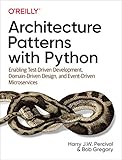Testing and Quality
If it’s not tested, it doesn’t work. When your tests passing lets you deploy without any concerns, your tests are good enough. Otherwise, you’ve got more work to do.
- Why test?
- Types of tests
- Non-functional testing
- Testing in production and monitoring
- To be categorized
- Great books
Why test?
Software needs to work, and if it’s not tested, it doesn’t work. In the rare event it works today, I assure you it’ll stop working after you make a change. If you can’t make a change safely, your system will go to shit instantly.
Making code testable forces better design:
- Small, focused functions with clear inputs and outputs
- Separation of concerns - business logic separate from UI/database/external services
- Dependency injection instead of global state
- Clear interfaces between components
- Reduced coupling between modules
- Better documentation through tests as examples
Very related to design
- SOLID designs (OO joke there, haha!)
- Safe to refactor
- Always safe to deploy
- System is well documented
Types of tests
Smoke Testing
- Purpose: Verify basic functionality works after deployment
- Scope: Core system paths and critical features
- Written by: Developers or QA team
- Maintenance: Low - focuses on stable core paths
- Example: Verifying login flow, basic API endpoints respond, database connections work
- Regression Role: Quick detection of major system failures
Acceptance Tests - Validation that requirements are met
- Purpose: Validate software meets business requirements
- Scope: End-to-end business scenarios and workflows
- Written by: QA team with business stakeholders
- Maintenance: Changes with business requirements
- Example: Verifying a customer can complete an e-commerce purchase flow
- Regression Role: Ensures core business functionality remains intact
End To End Tests - Expensive but critical
- Purpose: Validate entire system works together
- Scope: Full system testing from user perspective
- Configurations: Multiple environments and setups
- Different devices
- Different browsers
- Different screen orientations
- Different operating systems
- Cost: Most expensive tests to maintain
- Value: Critical for ensuring full system functionality
- Quantity: Keep these minimal but strategic
Integration Tests - Correct interactions with external world
- Purpose: Verify components work together correctly
- Scope: Interactions between multiple components/services
- Written by: Developers with system architecture knowledge
- Maintenance: Changes with interface/API changes
- Example: Testing database operations through service layer
- Regression Role: Catches integration breakages between components
The Humble Object Pattern
When dealing with external dependencies that are hard to test (like UI, hardware, etc.):
- Extract all logic from the hard-to-test component into a testable service
- Leave only the bare minimum code in the “humble” component that interfaces with the external dependency
- The humble component becomes a thin adapter that’s so simple it may not need tests
Example:
- Instead of testing UI rendering directly, extract business logic into a testable view model
- UI component becomes a simple “humble” translator between view model and screen
Common uses:
- UI rendering
- Hardware interfaces
- File system operations
- Network calls
- Database access
Snapshot Tests - Validating UX
- Purpose: Detect unexpected changes in output
- Scope: UI components, API responses, generated files
- Written by: Developers during feature development
- Maintenance: Updates needed when intentional changes occur
- Example: Capturing rendered HTML of a React component
- Regression Role: Catches unintended changes in output format
Unit Tests - The code does what the developer wants
- Purpose: Verify individual components work as designed
- Scope: Single functions/classes in isolation
- Written by: Developers
- Maintenance: Changes with code implementation
- Example: Testing a function that calculates tax on an order
- Regression Role: Catches regressions in component logic
Back in the 2000s, “amazing developers” walked through all their code in the debugger to make sure it was doing what was expected. But like all manual activities, this gets dreary, error-prone, and skipped. Instead, write unit tests to ensure your code works as you expect.
Compiler and static analysis based testing
If you use a strongly typed language, and use types as much as you can, you get lots of testing for free from the compiler! Similarly, if you can have automated code analysis, you get testing for free through analysis. See AWS Code Guru, and some bugs it detects.
These bugs are the kinds of errors that developers can unknowingly introduce in the course of their day-to-day work. Introducing bugs is easy, but tracking down their root causes can be hard. Some of the bugs even found issues that went against the official documentation. One team found a race condition with the Java ConcurrentHashMap type; the documentation said it was thread-safe, but if two threads picked up the process at the same time, the values of instantiated ConcurrentHashMap objects could be overwritten.
The first involved key derivation and password hashing using the Argon2 algorithm. Chan knew about password hashing, but not with the fairly new Argon2 algorithm. The second came from invoking a shell command with subprocess.Popen([cmd], shell=True), which could risk unwanted privilege escalation in the shell. Instead, he used the shlex.split() and shlex.quote() commands to avoid invoking a shell at all.
From Programming with types:
Although a weak type system is easier to work with in the short term, as it doesn’t force programmers to explicitly convert values between types, it does not provide the same guarantees we get from a stronger type system. Most of the benefits described in this chapter and the techniques employed in the rest of this book lose their effectiveness if they are not properly enforced.
Examples:
- Making types for primitive types, like encoding units - E.g. a type for meters vs inches (space catastrophe)
- A type for velocity vs volume.
- Rust for borrow
- JS to TS
- Python type system
- Implicit Typing vs Duck Typing
- It’s hard to make it compile, but once compiles it works.
Non-functional testing
Load Testing
Tests applications’ performance by simulating different loads. Then we can calculate the capacity of the application.
Stress Testing
We deliberately create high loads to the APIs and test if the APIs are able to function normally.
Security Testing
This tests the APIs against all possible external threats.
Fuzz Testing
This injects invalid or unexpected input data into the API and tries to crash the API. In this way, it identifies the API vulnerabilities.


